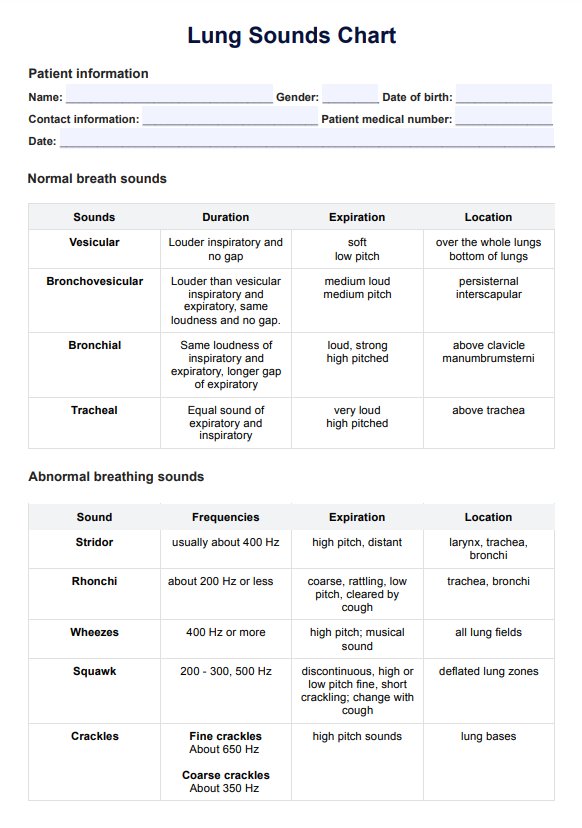Healthcare professionals use the Lung Sounds Chart during physical examinations by auscultating the patient’s chest with a stethoscope. They compare the sounds they hear with those illustrated on the chart to determine if they are normal or indicate potential respiratory issues.

Lung Sounds
Explore how a Lung Sound Chart aids healthcare professionals in identifying and interpreting both normal and abnormal lung sounds, enhancing diagnosis and treatment.
Lung Sounds Template
Commonly asked questions
The chart typically includes normal breath sounds like tracheal, bronchial, and vesicular, as well as abnormal sounds such as wheezing, crackles, and rhonchi. Each type is described with characteristics to help differentiate them.
Referencing a Lung Sounds Chart helps ensure accurate identification of respiratory sounds, improves diagnostic precision, and guides appropriate treatment decisions. It provides a structured way to analyze sounds and their implications for the patient’s respiratory health.
EHR and practice management software
Get started for free
*No credit card required
Free
$0/usd
Unlimited clients
Telehealth
1GB of storage
Client portal text
Automated billing and online payments











